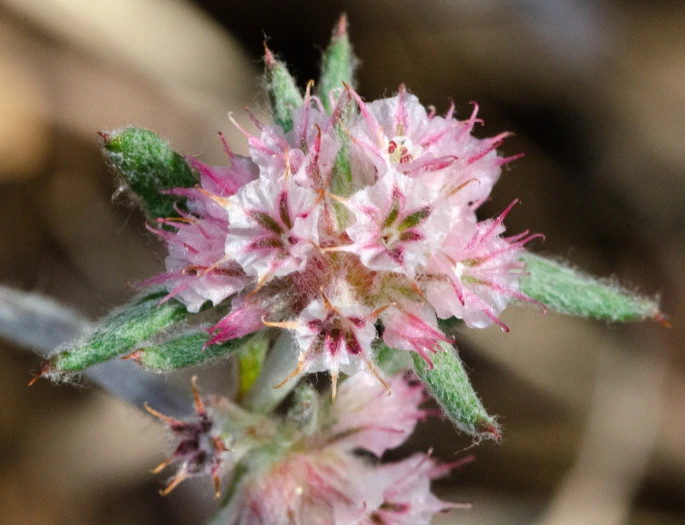Pink Spineflower
(Chorizanthe membranacea)
Pink Spineflower (Chorizanthe membranacea)
/
/

Don Loarie
CC BY 4.0
Image By:
Don Loarie
Recorded By:
Copyright:
CC BY 4.0
Copyright Notice:
Photo by: Don Loarie | License Type: CC BY 4.0 | License URL: http://creativecommons.org/licenses/by/4.0/ | Rights Holder: Don Loarie | Publisher: iNaturalist | Date Created: 2020-06-11T08:46:03-07:00 |

























Estimated Native Range
Climate Requirements for Allentown, Pennsylvania
| This Plant | Your Site | Plant Suitability for Your Location | ||
|---|---|---|---|---|
| • Precipitation | 8" - 87" | 45" | Aquatic | Aquatic |
| • High Temp. | 52°F - 102°F | 86°F | Your summer temperatures are normal for this plant. | Excellent |
| • Low Temp. | 7°F - 41°F | 19°F | Your winter temperatures are normal for this plant | Excellent |
This plant may not grow well at your location - your precipitation is too high.
Summary
Chorizanthe membranacea, commonly known as pink spineflower, is a perennial herb native to the coastal scrub and chaparral regions of Oregon and California. It is adapted to these Mediterranean-type ecosystems with dry summers and wet winters. The plant typically grows erect to a height of up to 3.3 feet tall, with linear, somewhat fleshy leaves that are an adaptation to its dry habitat. From late spring to early summer, it produces dense clusters of small flowers that range in color from white to pink. These flowers are surrounded by fused bracts, which give the inflorescences a spiky appearance. The pink spineflower is particularly notable for its showy flower clusters and its ability to thrive in poor, rocky soils.
In cultivation, pink spineflower is valued for its drought tolerance and its ability to provide a splash of color in xeriscapes, rock gardens, and native plantings. It is also used to attract pollinators such as bees. This species prefers full sun to light shade and requires well-drained soils. It is relatively low maintenance, but it may need protection from snails and slugs, which can damage the foliage. While not commonly available in the nursery trade, it can be grown from seed and is a unique addition to a native plant enthusiast’s garden.CC BY-SA 4.0
In cultivation, pink spineflower is valued for its drought tolerance and its ability to provide a splash of color in xeriscapes, rock gardens, and native plantings. It is also used to attract pollinators such as bees. This species prefers full sun to light shade and requires well-drained soils. It is relatively low maintenance, but it may need protection from snails and slugs, which can damage the foliage. While not commonly available in the nursery trade, it can be grown from seed and is a unique addition to a native plant enthusiast’s garden.CC BY-SA 4.0
Plant Description
- Plant Type: Herb
- Height: 0.5-1.5 feet
- Width: 0.5-1 feet
- Growth Rate: Moderate
- Flower Color: Pink, Red, White
- Flowering Season: Spring, Summer
- Leaf Retention:
Growth Requirements
- Sun: Full Sun
- Water: Low
- Drainage: Fast
Common Uses
Drought Tolerant, Low Maintenance
Natural Habitat
Coastal scrub and chaparral regions
Other Names
Common Names: Coastal Spineflower, Membranous Spineflower
Scientific Names: Chorizanthe membranacea, Eriogonella membranacea, Eriogonum membranaceum
GBIF Accepted Name: Chorizanthe membranacea